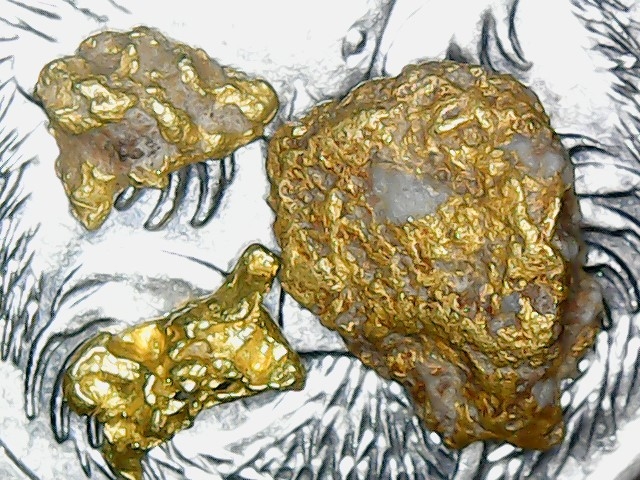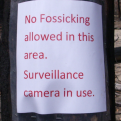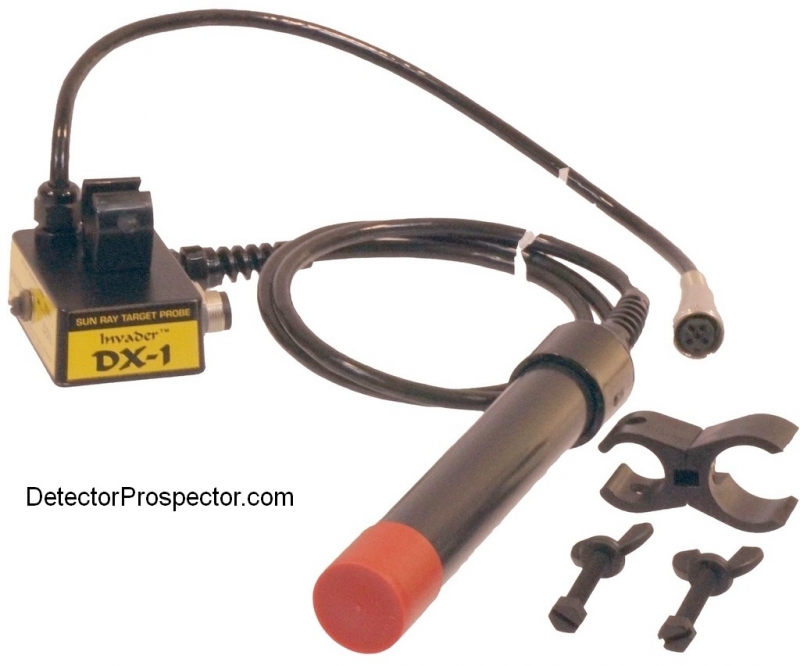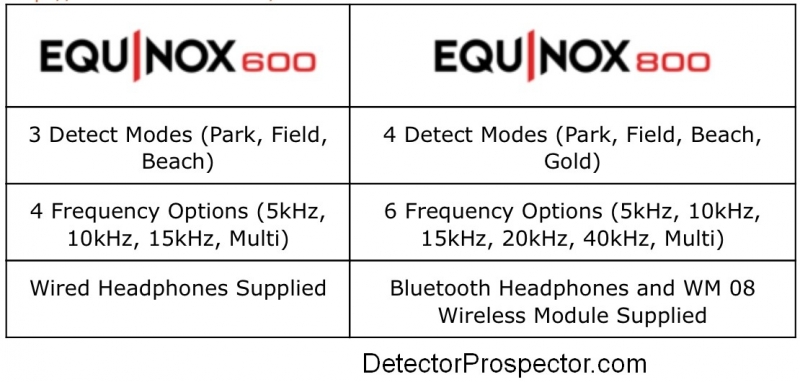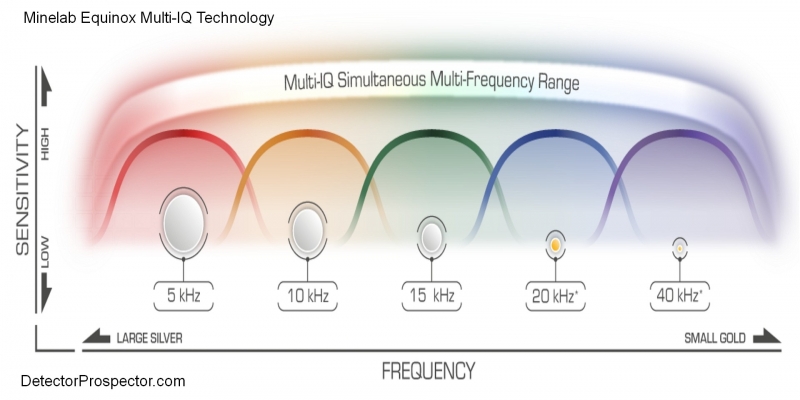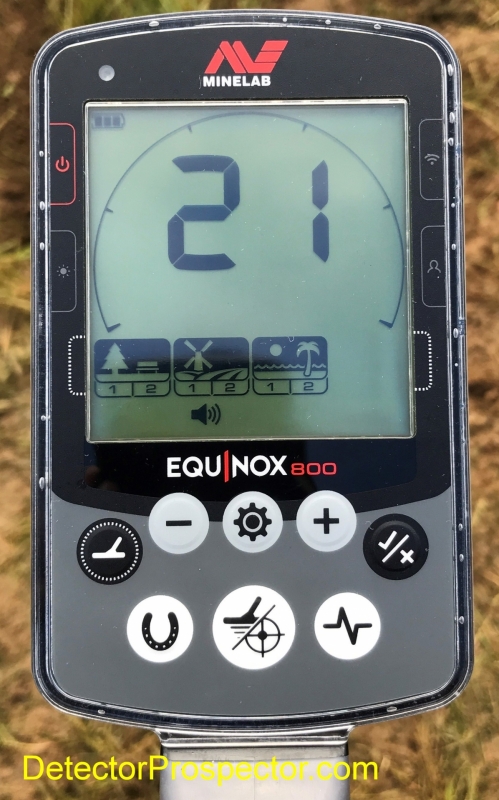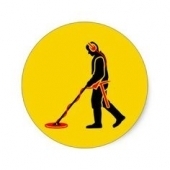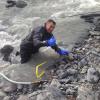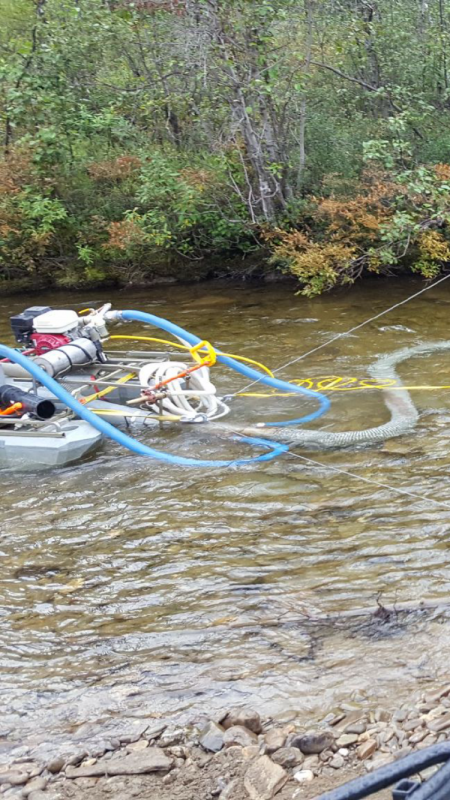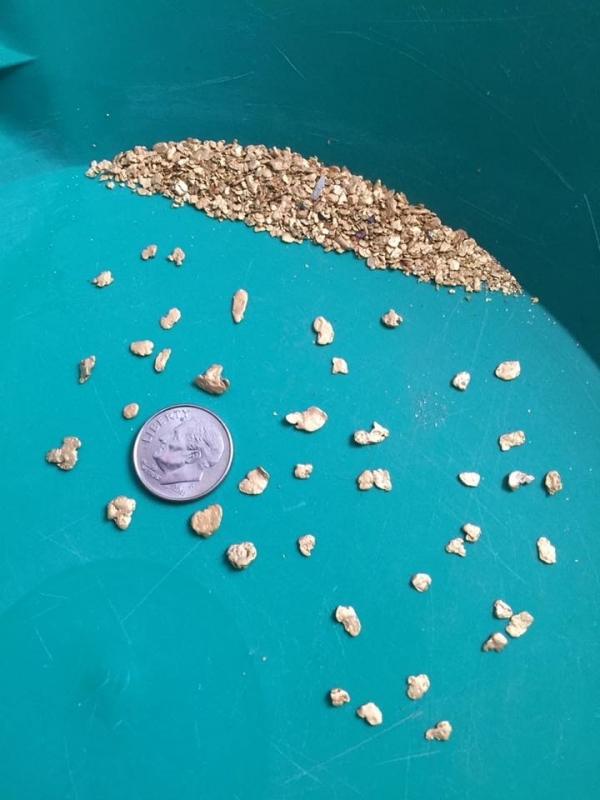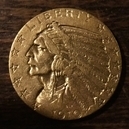Leaderboard
Popular Content
Showing content with the highest reputation on 11/04/2017 in all areas
-
JW anybody can find multi ounce nuggets that are just laying around, but it takes real talent to find the point oners.. At least that`s what I keep telling myself. cheers Dave7 points
-
A review Anyone who uses the BLM LR2000 search function knows it can be a challenge to get meaningful results. Often the service is down but you aren't notified of a problem with the system until you go through the whole complex search process to discover there was an "error". Frustrating at times. Well it appears the BLM decided it was time to change the look and feel of the LR2000 search function. They notified users months ago that they were working on an improved version but they caught a lot of people by surprise when they introduced the NEW! IMPROVED! LR2000 on November 1 and shut down the functions of the OLD! BAD! LR2000 at the same time. Problem was they didn't tell anyone. The old LR2000 still appears to be there and will allow you to do a search. That search returns an error, as mentioned earlier that's not unexpected or uncommon when using the LR2000. I use the LR2000 a lot when I need the most recent information on a land or claim case file. It took me nearly 24 hours after the changeover to get fed up enough with the old LR2000 not working to try the new LR2000 which has been available but not working for the last nine months. I'm hoping the BLM will set up that old LR2000 web address to redirect to the new LR2000 page so others won't have to waste their time beating a dead search system like I did. The old LR2000 was clunky. It reminded me of an old unfamiliar broken down right hand drive truck with a Japanese language repair manual. It was really that awkward and counter intuitive. There were many blogs, manuals and videos devoted to explaining the esoteric mysteries of the BLM's version of public access to public records, I even helped write a few myself. I made good use of the old LR2000 on the days it was working and I was glad to have it when I could get results but it needed fixing. The new LR2000 has a cleaner less intimidating interface with a slightly simpler set of options. I really don't like the "black topo" background the BLM now puts on all their web pages. If you like the black topo theme you are probably going to like the look of these new search pages better than the old ones. The behind the scenes search function has changed a lot from the old LR2000. I tried it on several browsers and three operating systems. I had problems on every browser and system. The Search seems to hang in some circumstances, in others it returns results as quickly as the old LR2000. The actual search itself seems to be slower sometimes. Every browser I tried had problems when it had run a few searches. The searches would eventually hang and several loops would keep the browser so busy it would lock up. That's not something I'm used to experiencing. This is a new system so I'm hoping the BLM will get these glitches out soon. The results of each search now displays in a new interface. Essentially there will be a window frame on the results page with the document displayed inside the frame as a PDF. Like the old LR2000 there are options to download the document in several formats including Excel, PDF and HTML. You can now modify or start a new search from the results page. Land Matters has made an effort to bypass the clunky old LR2000 interface and allow you to directly access any claims BLM serial register page directly with a few clicks on a map. This turned out to be a lot quicker way to get information on claims in a specific area without having to pound through the old LR2000. Being a direct live link to the BLM the information is as current as possible unlike other mapping programs that present static information updated every month or so. When the unannounced changeover in LR2000 search systems happened it broke Land Matters system of direct access. With more than 380,000 mining claims being actively tracked Land Matters had a problem. Claims Advantage Members also get several reports a month. In the last two days Land Matters had released two reports with a combined total of more than 20,000 maps and direct links to a broken LR2000. That's 400,000 missing documents. Sometimes life can be.... interesting. Needless to say I have been busy. It took 24 hours but I deciphered the new LR2000 system, fixed the links to the serial register pages and corrected, compiled and uploaded new member reports. The mining claim serial register pages linked to on the maps load more quickly than the old ones did. If you have any problems with those maps or the Member Reports please let me know. Please try out the new LR2000 and share your experiences here. Try the Mining Claims Maps at Land Matters and marvel at the new search results. If you like the way the map link system works we can add the feature for a lot more types of research. Barry6 points
-
6 points
-
mn, interesting that you should ask about Bruce Candy, as he is probably one of the most talented and enigmatic people I have ever met. I first met Bruce in the early eighties, when I was detecting in Wedderburn with a Garret Deepseeker. From memory he had produced with the early Minelab team what I would describe as a copy of the Whites Coinmaster, but perhaps a little smoother. From what I recall it was in a silver box about the same dimensions as a Whites with similar lay out and called a Gold Seeker, but I can't recall the designation number. John Hider-Smith had tipped me off that this young bloke from South Africa was pretty cluey, and that Minelab were about to release a new machine designed for Australian conditions. ( able to handle high mineralization) American machines tended to struggle in areas of high iron content, and the new Goldseeker 15000 would be able to handle this problem. The use of the double D coil was a major factor in the stability of this detector. To get one of these machines, one had to pay a deposit and pre order it. I did so, and when it arrived was very happy with the results. I then appeared in various news papers and magazines showing the gold that the 15,000 had enabled me to find, and proclaiming what a great Australian made machine it was. During this period I met Bruce Candy and we became friends. In 1987 Bruce contacted me and asked if I would be interested in testing a new machine he had developed that would automatically ground balance, and keep balanced while detecting. He called it 'ground tracking', and it was a major step in metal detector development. Naturally I jumped at the opportunity, and the Orange Roughie patch proved what a great detector the GT16000 was. 1988 saw me taking a trip around the world, and it was while in London that I happened upon a newspaper article describing a new development in metal detecting called pulse induction. A chap named Foster and a company called Pulse Induction Technologies just south of London had developed a detector that would penetrate far deeper than the current VLF machines, and had been used to recover Celtic treasures. I phoned them and gathered as much information as I could. As soon as I arrived back in Australia I jumped on a plane to Adelaide where I relayed what little information I had managed to collect on pulse induction to Bruce. I recall him saying that it would be a bit tricky getting it to work on gold as the 'halo' from gold may die too quickly for the coil to pick it up as it changed from transmit to receive. I told him that they were finding gold as treasure with it in England, so it must be possible. Bruce said" leave it with me, and I'll see what I can do". In 89 he came up with the prototype PI predecessor to the SD2000, and the 'unfair advantage' was born, and with it a whole new adventure for me. Bruce was never really interested in prospecting, and I can't recall him ever swinging a coil. As a matter of fact, metal detectors were never his greatest passion. Hi Fi was of much greater interest, and he developed some incredible amplifiers from what I have been told. Once when I visited his home in the Adelaide hills he showed me his awesome collection of replica skulls of pre humans and their close relatives. Anthropology is a great passion of his, and his knowledge is exceptional. Maybe this relates to his South African heritage. Bruce Candy in an extremely unique human being.5 points
-
Tarnagulla has never been kind to me either Dave. Best I ever scored there were a couple of sub ouncers years ago.2 points
-
This isn't at all a detailed comparison, but this sub-forum seems to be right place to put it. I'm pretty sure these devices are no longer made for any detector models, but it might help someone thinking of buying a used one. I bought a used FX-1 (for Fisher F75) recently. I did look for reviews and found a few, but unless I read too fast those didn't tell the key features (particularly minuses). This is not meant to be an overall review like you'd find in a magazine. The other reviews you can find on the WWW do that. The main thing to know about this device is that it is effectively a (passive) replacement/substitute coil for your detector. It has a switch for changing between your main coil and the pinpointer probe -- only one operates at a time. PLUS: since it's using the detector electronics as would any coil, you get all the audible and visible readouts that you normally get, thus discrimination. That sets it apart from every handheld standalone pinpointer I'm aware of. MINUSES: two big ones, IMO. 1) For the same reason that you get discrimination (using the detectors capabilities), if your detector is set in motion mode (which is the default and in many cases the only option on modern detectors), you have to be moving the probe to get it to sound off. 2) Ditto the reasoning above, the sensitivity depends upon what gain you've set your detector for your main coil. In my case I had the F75 gain set to 50 (half scale) and the probe only went off when I got within about 1.5 in (~4 cm) from a piece of metal. Compare that to the White's Bullseye TRX at 3 in. and the Garrett Carrot at 2.5 in. The documentation I received (hard/impossible to find online, BTW) claims 3 inch depth. I can believe that if I crank the F75 gain up to 99. Sure, I could go to non-motion all-metal and I could crank up the gain. But that's a lot of changing detector settings every time I want to dig. I assume the detector's pinpoint mode would also work (it's basically non-motion all-metal) but on the F75 that requires holding down a spring-loaded switch. That's not at all convenient when you're on the ground trying to probe for a target in a hole. Further, one of the big reasons detectors went to motion mode in the first place is to be able to cancel/adjust-out electronics drift. So even if you lock into non-motion all-metal I assume that could have a negative effect since often one can spend non-negligible time finding the target in the hole (uh, especially if you need to get to 1.5 inches to hear anything!). As a novelty and possibly for special situations I can see using this device. Unfortunately, unless I'm missing something, mine is going on the shelf and/or auction block.1 point
-
Good morning all, I just joined this site, as my wife and I have taken an interest to detecting. We enjoy riding out to remote areas on our ATVs and decided detecting would enhance our fun. Looking forward to learning this new hobby and the adventures that follow. ;)1 point
-
The information here is derived from commentary by Minelab representatives in this video... plus from these prior threads.... http://www.detectorprospector.com/forum/topic/4303-minelab-equinox-multi-iq-and-search-modes/ and http://www.detectorprospector.com/forum/topic/4488-minelab-equinox-multi-iq-technology-part-2/ For starters it is stated both the Equinox 600 and Equinox 800 feature Park, Field, and Beach hunt modes, that correspond to the three icons shown on the Equinox 800 screen above. Each mode has two saved settings options “1” and “2”. The Equinox 800 offers a fourth mode, the Gold mode, that the Equinox 600 lacks. It is stated that 20 kHz and 40 kHz are not available as single operating frequencies in Equinox 600. The Multi-IQ frequency range (5, 10, 15, 20, and 40 kHz) applies to both Equinox model multifrequency modes. "20 kHz and 40 kHz are not available as single operating frequencies in EQUINOX 600. The Multi-IQ frequency range shown applies to both EQUINOX 600 and 800." It can therefore be surmised that the Gold mode on the Equinox 800 exists as a way to offer both 20 kHz and 40 kHz single frequency modes that are lacking on the Equinox 600. Further “Both models also have simultaneous multi-frequency options that cover a much broader range of targets than any one single frequency can – and they’re different across the Detecting Modes!“ So we have four different modes each one specifically tuned for each of the four scenarios - hunting in a Park full of modern trash, hunting in a Field with all manner of non-ferrous coins and relics plus lots of ferrous trash, hunting at the Beach which may entail saltwater and mineralized soils, and hunting for Gold which can mean tiny gold in highly mineralized ground. If Minelab does this trick right the Equinox will be more than just a general purpose detector that can be tuned for most any detecting. Instead, each of the four modes may be, through changes of the actual base programming, more like owning four different detectors in one housing. And not only can you switch on the fly between the four modes, but each mode has two saved setting options. Now we are talking four different detectors, each set up with two different sets of tuning options. Certainly Minelab is not the first to offer different operating modes and saved options. As soon as you start looking at only detectors that are waterproof however, this sort of thing is few and far between indeed. This is just another way in which the Minelab Equinox is setting the stage for being one of if not the most versatile detectors ever made.1 point
-
1 point
-
Reg, I personally will never tire of the tales you have shared, fantastic reads. Keep them coming and consider it a prelude to a book1 point
-
Dave: More Llanelly than Tarnagulla, but have a try around Black Ben reef and gully. Oodles of small gold there once and the Z cranked right up should find more. Same applies to the reef heaps and upper parts of the gullies draining the Corfu Reef area. PS: Don't tell anyone I told you though!1 point
-
1 point
-
1 point
-
Yes, quite chunky bits and the odd thing is I used to mine upstream of this location 1/2 mile for 6 years and no matter how deep we dug/dredged/highbanked , we got only gold fines, nothing chunky, the gold had no weight, just pretty little fines and hundreds of them, made a nice swirl in our pans. This was all gravels and large cobbles . But bedrock was just upstream 500 feet. I am wondering if the whole creek bottom is bedrock with dips in the bedrock where the gold laden gravels gather in certain spots like where the photo was taken and like where we got them fines? I just thought some more about my ponderings. Just immediately upstream of the fine gold location and before the slick bedrock, were jagged chunks of bedrock and the stream was deeper with a 10 foot tall bank. I bet we should have dredged right there for there for bigger gold !!! That whole spot is off limits now as the land changed hands, dammit... Come to think of it, where this stream is straight and narrower is where the bare bedrock and boulders tend to be and where it widens out and bends hard is where the gravels and gold tend to be. Does this mean anything to you as far as reading the stream? Will the gold be the biggest right where the creek widens and gravels begin to show? How do I tell how deep to bedrock in the gravel areas? I can only go about 2 feet with my baby dredge. If only I were not so afraid of being underwater or getting sick from having my mouth on a hookah thing potentially teeming with bacteria from dirty river water....I had that Giardia bacteria once which put me in the hospital 2 days ...picked it up at the Crisson gold mine in Georgia from the gold panning troughs...do hookah divers generally have strong stomachs or do you get sickly after dredging underwater? And upstream of the spot where we got the fines highbanking is another hot spot for fines, BB size nuggets and copper, all in a giant S bend with slick bedrock and potholes and FAST water. The stream is VERY wide there too, like 80 feet and the locals swim in the deep holes. Upstream of that no gold at all between limestone bluffs and an island, then a 1/2 mile of slick bedrock the kayakers love at high water, but not a speck of gold. Hmmmm, so maybe I should ignore creek areas with straight narrow stream width, bare bedrock, as they tend to have no gold and just concentrate on wide areas with fast water just after a narrow stretch and where gravels tend to be , especially if cracks can be worked in bedrock? Deeper potholes are usually poor but the shallow ones tend to have gold ,coins, rings or at least they sure did by that swim area. -T1 point
-
Another problem is the ground balance setting is not a true indication of how mineralized the ground is. Great post Tim. I see constantly the effects of ground mineralization and adjacent trash on target id numbers. In my magnetite laden ground I can get coins down to six or seven inches. The coin target id numbers shift to ferrous at depth. Coins next to other items can read all over the place. And nearly all detectors have issues with some ferrous items giving off partial high coin readings. The bottom line is there are clearly good targets, there are clearly bad targets, and then there is every variation you can imagine in between. The Ferrous/Non-Ferrous Overlap1 point
-
Quite a few years ago I was present when an 8" washed away during flood. It was tied off with ropes but the dredge was huge. It broke the ropes and washed roughly a mile down stream. Since then I have been paranoid so use a cable on the front end either to trees or to dead men made out of old axels. When I tie off to trees I connect the cable to polyester straps as to not damage the trees. I always tie one end of the back off with a rope to hold the dredge in place to manage tailings. On the running end of the cable I use a haven grip to adjust the length of the cable.1 point
-
One thing about Minelab - when they introduce a complete new detector series it is usually in line with this statement "When Minelab develop a new detecting technology we aim to create a paradigm shift from existing products and provide a clear performance advantage for our customers." Look at the history of multifrequency and selectable frequency at Minelab: 1991 BBS - Minelab Sovereign and derivatives like the Excalibur 1999 FBS - Minelab Explorer and derivative models like the E-TRAC 2005 VFLEX - X-Terra model series 2012 FBS2 - Minelab CTX 3030 2017 Multi-IQ - Equinox 600/800 I am a bit surprised that so many people consider BBS and FBS to be magical technology that can never be improved on. There are two obvious weaknesses, slow recovery speed/target masking and relative insensitivity to low conductors as compared to some competition. Multi-IQ is addressing these issues. What then going forward? Will a CTX 4040 have FBS3? Personally it looks to me like BBS/FBS has hit the end of the road. Just like with the GPX 5000 where Minelab recognized they had milked PI for all it is worth, and moved on to the GPZ 7000 and ZVT technology. People worry about the Equinox eclipsing (Eclipse would have been a good alternative name to Equinox) the CTX 3030 when it looks to me more like Multi-IQ setting the stage for future developments. One thing the CTX platform does is allow for a much more powerful battery, and one can only imagine what Multi-IQ combined with a more powerful battery and tuned for high conductors would be able to do, while retaining the low conductor attributes of the Equinox. And while adding target trace, etc. to the mix. Take the above with a grain of salt. I have no inside information about where the CTX platform is headed. These are just my speculations based on what I would do if I were laying out a product roadmap. Looks to me like Minelab has plenty of room to maneuver going forward. Equinox and Multi-IQ are probably just the start of what you will see coming from Minelab over the next decade. The CTX has been out over five years now and has had a good run, but there is no reason to think it can't be surpassed. I am consolidating the Minelab Multi-IQ Technology Explained posts into a single document here as each installment is released.1 point
-
1 point
-
We talk about the "old-timers" but in 100 years we will be the old-timers. There will be footnotes about the "Electronic Gold Rush" of the late 20th and early 21st century - and we will be the ones that had a part of all that. Making history with every nugget dug!1 point
-
Here is a slightly different version of this type of stand. This one came with a used detector I bought some time ago so I did NOT make it.. forgive me for my lack of plumbing parts vocabulary but whoever made it, cut the top piece in half which allows it to snap on to the shaft very securely.. You can pull it on and off as you like. Bryan1 point





